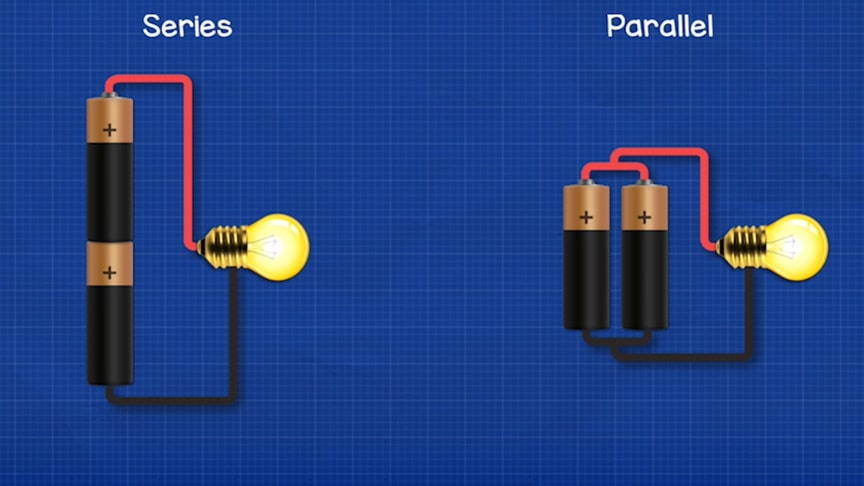Why do we connect batteries? find out here with series and parallel batteries as well as battery life calculations.We don’t always connect batteries in series.Mostly however, we do use series connected cells as we want higher voltages as individual cells tend to be inherently low voltage devices. On the order of 1.2 to 3.7 volts per cell depending upon chemistry.
source/image(PrtSc): The Engineering Mindset
However, there are devices that use cells in parallel to increase the available current, or to make it last longer by doubling the current capacity, (mAh adds together), although this does not increase the energy capacity of two cells in series.
If two or more components are connected in parallel, they have the same difference of potential (voltage) across their ends. The potential differences across the components are the same in magnitude, and they also have identical polarities. The same voltage is applied to all circuit components connected in parallel.
Advertisement
Series circuits are sometimes referred to as current-coupled or daisy chain-coupled. The electric current in a series circuit goes through every component in the circuit. Therefore, all of the components in a series connection carry the same current.In a series circuit, every device must function for the circuit to be complete. If one bulb burns out in a series circuit, the entire circuit is broken. In parallel circuits, each light bulb has its own circuit, so all but one light could be burned out, and the last one will still function.











